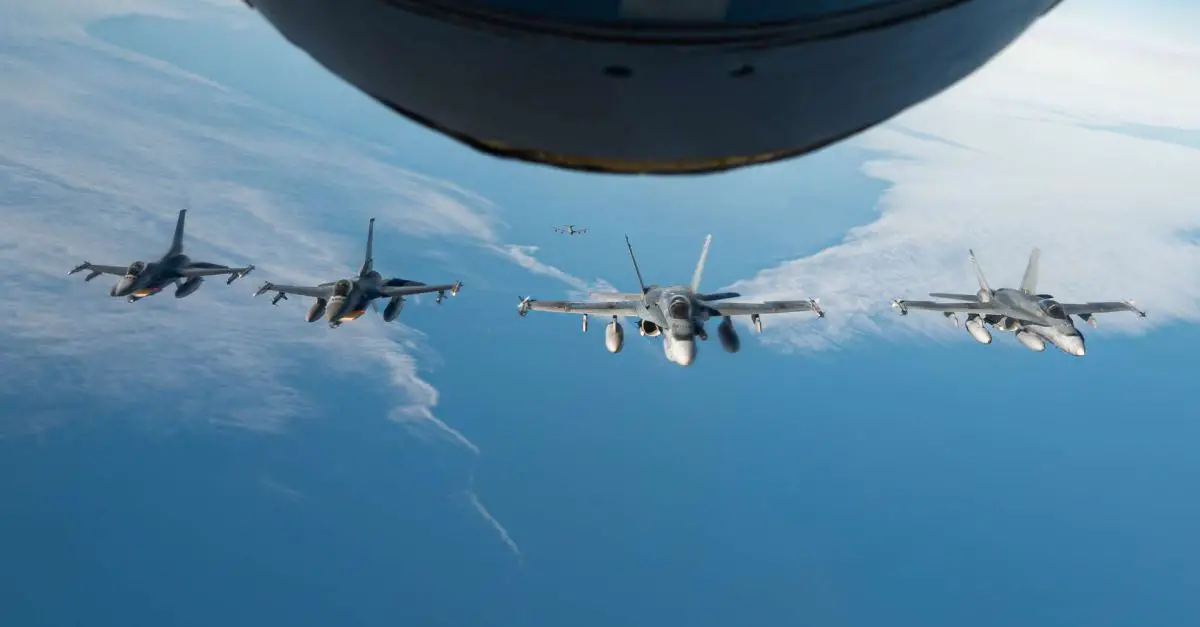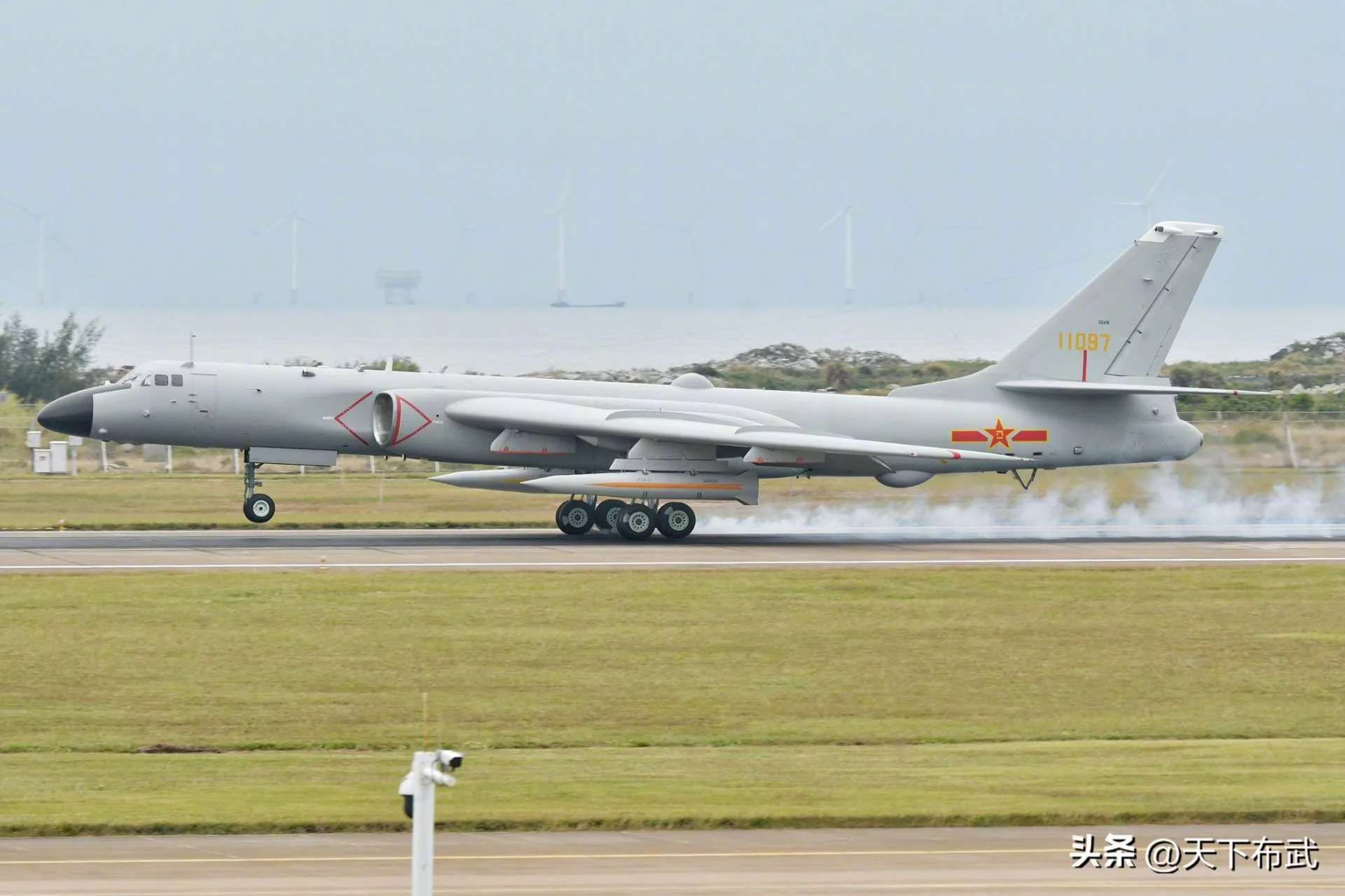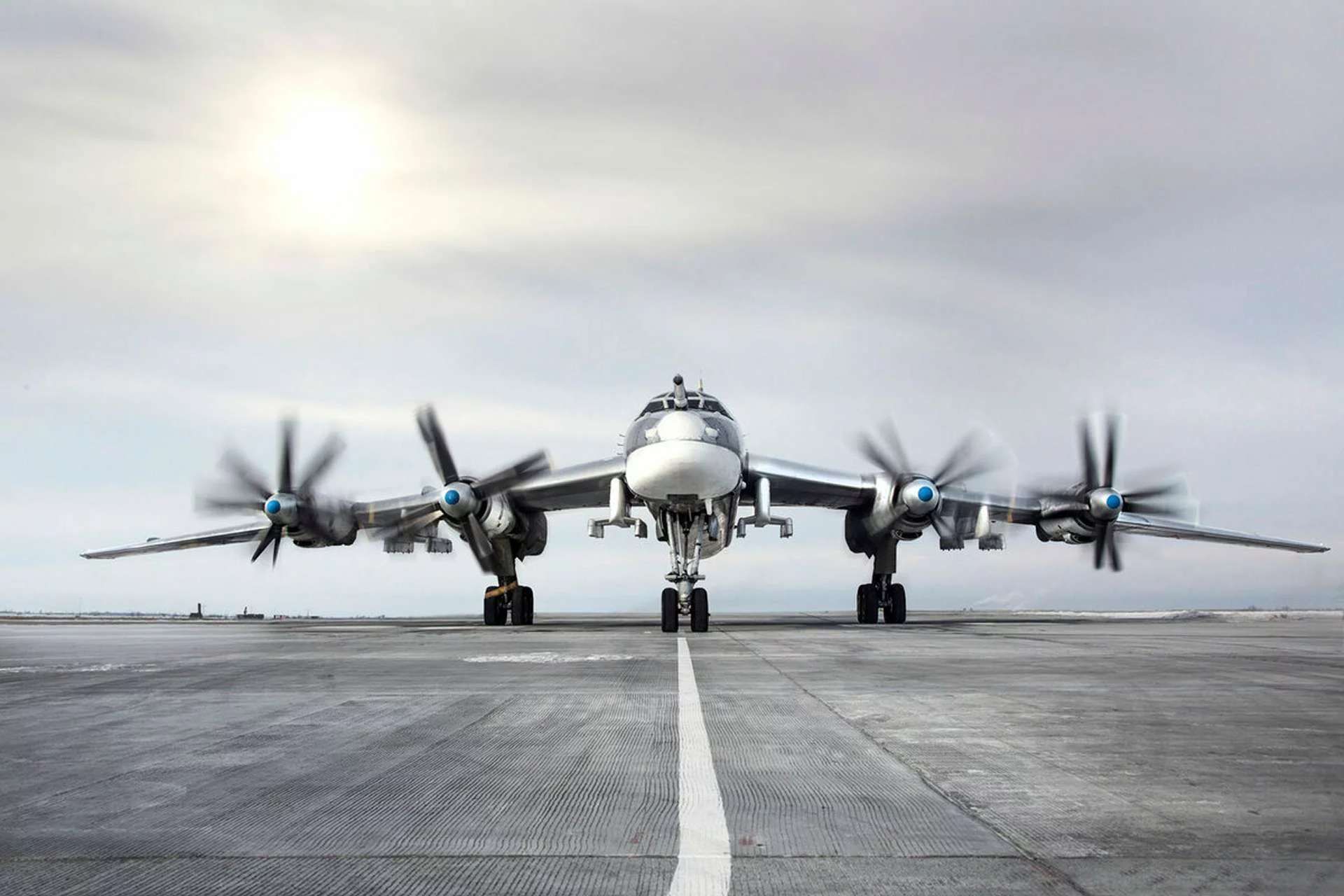Breaking News
US and Canada conduct first joint interception of Russian Tu-95MS and Chinese H-6K strategic bombers over Alaska.
On July 24, 2024, the US North American Aerospace Defense Command (NORAD) announced that American F-16s and F-35s, along with Canadian CF-18s fighter jets, intercepted two Russian Tu-95MS and two Chinese H-6K strategic bombers off the coast of Alaska. This event marked the first time military aircraft from these countries simultaneously entered the Alaska Air Defense Identification Zone (ADIZ). NORAD's statement confirmed that the Russian and Chinese aircraft remained in international airspace and did not enter American or Canadian sovereign airspace.
Follow Army Recognition on Google News at this link

This interception by US and Canadian fighter jets marked the first time strategic bombers from Russia and China simultaneously entered the Alaska Air Defense Identification Zone (ADIZ). (Picture source: NORAD)
Despite this, the coordinated presence of these bombers near US territory indicates evolving military cooperation between Russia and China. NORAD will continue to monitor such activities and respond as necessary to ensure the defense of North America. According to TASS, aircraft from the Russian Aerospace Forces (VKS) and the People's Liberation Army Air Force (PLA) conducted a joint air patrol, escorted by Russian Su-30SM and Su-35S fighters. The air group, consisting of Tu-95MS strategic missile carriers from the VKS and H-6K strategic bombers from the PLA, patrolled over the Chukchi and Bering Seas and the northern part of the Pacific Ocean. The duration of this joint flight was over five hours.
The Russian Defense Ministry stated that the Chinese and Russian aircraft adhered strictly to international law, did not violate any state's airspace during their patrol, and were accompanied by foreign fighters at various points along their route. Upon completing the patrol, all aircraft involved safely returned to their respective base airfields. The Russian military department noted that this joint patrol is part of the 2024 military cooperation plan and is not directed against third countries.

The arrival of the Chinese H-6K missile carrier along with the Russian Tu-95MS in the Alaska ADIZ is particularly notable as it was the first instance of Chinese military aircraft operating in this area. (Picture source: CCTV)
The Russian and Chinese joint exercises extended to naval operations, with the completion of joint exercises in the South China Sea. Additionally, China announced plans to hold further military exercises in the Yellow Sea. These ongoing cooperative efforts between Russia and China signify a strategic partnership, aiming to enhance their military interoperability and coordination.
The arrival of Chinese H-6K missile carrier jets in the Alaska ADIZ is particularly notable as it was the first instance of Chinese military aircraft operating in this area. This move indicates China's growing capability to project power far from its shores and its strategic partnership with Russia. This partnership has strengthened since Russia's 2022 invasion of Ukraine, with China providing significant material support to Russia's military industry, including microelectronics, machine tools, and dual-use components critical for producing Russian weapons used in the conflict.

First entering service in 2015, the H-6K, an upgraded version of the Chinese H-6 bomber, is equipped with more advanced avionics, modern radar systems, and more powerful D-30-KP2 engines. (Picture source: Chinese social media)
China's support for Russia includes providing nitrocellulose for explosives and satellite imagery used by Moscow in its military operations in Ukraine. This alliance has prompted calls from NATO for China to cease all material and political support for Russia's war effort. The increasing military cooperation between Russia and China is evident in the Arctic region. Deputy Secretary of Defense Kathleen Hicks recently highlighted China's role as a major financier of Russian energy exploitation in the Arctic and its growing military collaboration with Russia in this strategically significant area.
The presence of Chinese aircraft in the Alaska ADIZ was anticipated. Last year, a large naval flotilla from Russia and China operated near Alaska, shadowed by U.S. Navy ships. Earlier this year, Air Force Gen. Gregory M. Guillot, head of NORAD, informed the House Armed Services Committee that Chinese air operations in the U.S. ADIZ were likely to commence soon. His predictions have now materialized with the joint appearance of Russian and Chinese bombers.

Introduced in the early 1980s, the Tu-95MS, an upgraded variant of the Tu-95 strategic bomber, features new hard points, advanced avionics, and more powerful NK-12MP turboprop engines, allowing the Tu-95MS to remain functional until at least 2040. (Picture source: Russian social media)


























